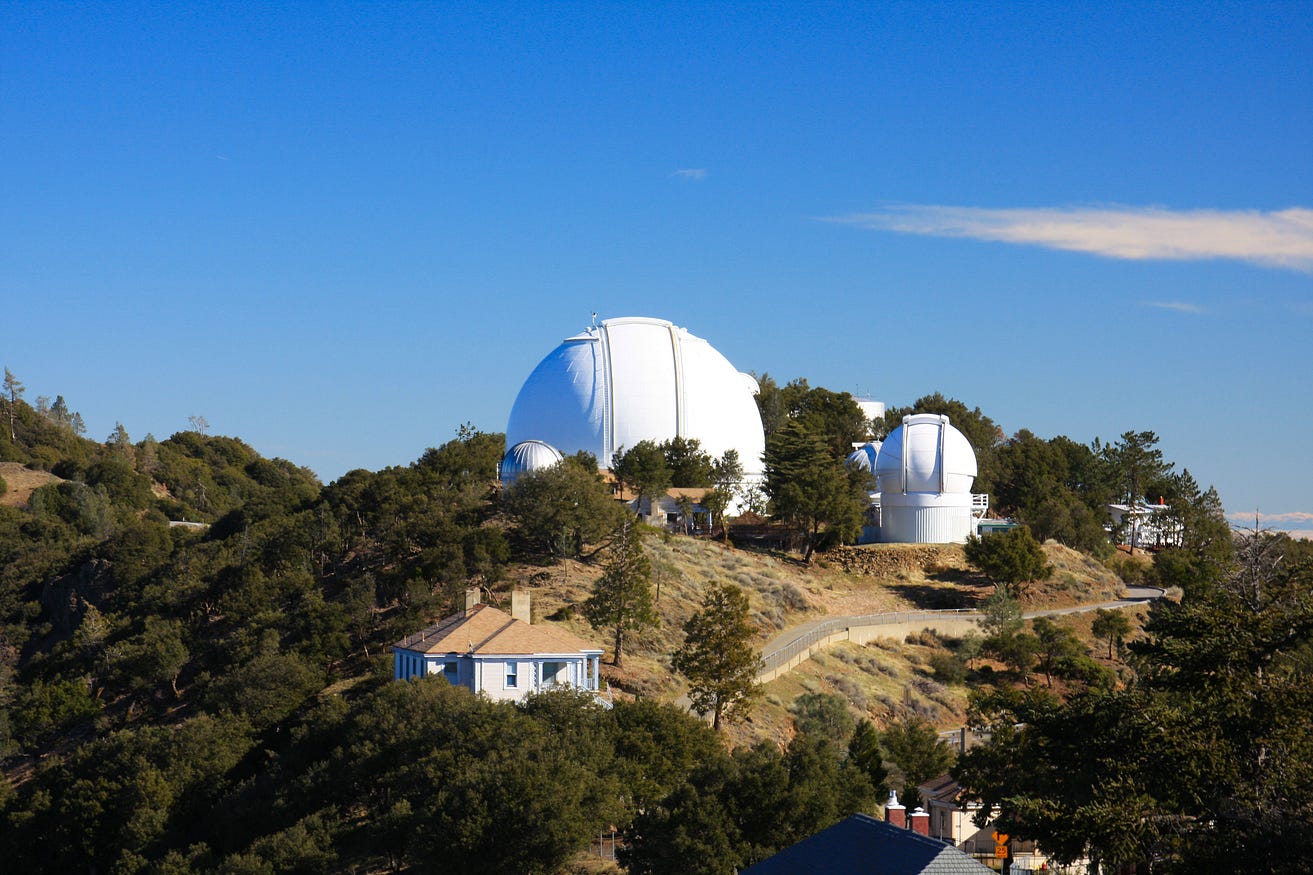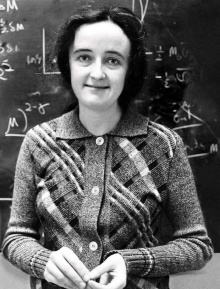Beatrice Tinsley, A Very Luminous Star
This is the first article in my series of ‘Women in Astronomy’ article series, in honour of the International Astronomical Union’s Women and Girls in Astronomy month (February).
Beatrice Muriel Hill Tinsley was a remarkable astronomer, who against all the difficulties in her life, wholly devoted herself to her passion, cosmology.
 Beatrice Tinsley. Image source: Wikipedia.
Beatrice Tinsley. Image source: Wikipedia.Beatrice Hill was born in 1941 in Chester, the United Kingdom, and her family later on emigrated to Christchurch, New Zealand, then soon moved to New Plymouth. Beatrice was a star student (no pun intended), and excelled in her schooling years, especially high school. At New Plymouth Girls’ High School, Beatrice not only had a distinguished academic record in all her subjects, but was also proficient in playing the piano as well as violin. She won several prizes during her time at school, acknowledging her academic and musical prowess, and perhaps her ultimate high school achievement was that she was the Dux of her school. In addition, she won a scholarship for university in 1957 (her final year of high school).
 Modern-day city of New Plymouth, with Mount Taranaki in the background. Image source: Wikipedia.
Modern-day city of New Plymouth, with Mount Taranaki in the background. Image source: Wikipedia.Beatrice Hill studied a Bachelor of Science degree at the University of Canterbury in Christchurch, and she thrived. She was involved in the community, taking part in many extracurriculars, whilst simultaneously excelling in her studies. During this time period, she also got married to her classmate, Brian Tinsley. After graduating with her Bachelor of Science in Physics with straight A’s, she did her Master’s degree. She completed her Master’s in 1962, having gotten all straight A’s and winning all the prizes available in her year.
 Modern-day Arts Centre of Christchurch. Previously the location of the University of Canterbury until 1961, the time period in which Beatrice Tinsley studied at the University of Canterbury. Image source: Wikimedia Commons.
Modern-day Arts Centre of Christchurch. Previously the location of the University of Canterbury until 1961, the time period in which Beatrice Tinsley studied at the University of Canterbury. Image source: Wikimedia Commons.The next year, Beatrice and Brian moved to Dallas, Texas in the United States of America, where she started her PhD at the University of Texas at Austin in 1963. UT-A was 600km away from where they lived in Dallas, and so Beatrice had to commute. She drove to Austin on Tuesdays and came back to Dallas on Fridays. She completed her PhD in record time (only 2 years and 2 months), and on a record topic — on the evolution of galaxies. Her thesis, ‘Evolution of galaxies and its significance for cosmology’ challenged many of the then-laws of physics.
 The University of Texas at Austin. Image source: Wikimedia Commons.
The University of Texas at Austin. Image source: Wikimedia Commons.After being awarded her doctorate in 1966, Dr. Beatrice Tinsley worked on presenting her research on galaxy evolution at various conferences. At one such gathering, Beatrice questioned the leading cosmologist of the time, Dr. Allan Sandage, about his theory that the universe is a closed system. This led to an academic rivalry between the two.
Beatrice diligently worked hard the next few years, publishing several pioneering works of research in cosmology, mainly on the evolution of galaxies and stellar evolution. In the meantime, she was also busy with her family, and was also involved with the community. She was even a member of the Richardson Symphony Orchestra! To help support herself and her family, she worked at several institutions for short periods of time, such as a three-month position at the California Institute of Technology in Pasadena, California, a six-month position at the University of Maryland in the Department of Astronomy, and a half-time position as an assistant professor of astronomy at UT-A.
 California Institute of Technology, otherwise known as Caltech, in Pasadena, California. Image source: Wikimedia Commons.
California Institute of Technology, otherwise known as Caltech, in Pasadena, California. Image source: Wikimedia Commons.With ground-breaking research in the field of cosmology, it is evident that Beatrice Tinsley received academic awards and recognition. For example, she was awarded the Annie J. Cannon Award in 1974 for her ‘outstanding research and promise for future research by a postdoctoral woman researcher’ for her research on galaxy evolution.
However, Beatrice’s personal life was strained during this time. She could not get a full-time position at the University of Dallas where Brian was an associate professor, and so in pursuit of better opportunities in the field which she was so passionate about — cosmology — Beatrice left her family in Dallas and took up the position of associate professor at Yale University in New Haven, Connecticut, in the department of astronomy in 1974. Prior to taking up her position, though, she travelled to Pasadena, California to work on a collaboration with her friend Dr. James Gunn on the life history of stars forming in a galaxy, then took up a six-month position as an assistant research astronomer and lecturer at Lick Observatory in Santa Cruz, California.
 The C. Donald Shane 3.0m telescope at Lick Observatory, San Jose, California. Image source: Wikimedia Commons.
The C. Donald Shane 3.0m telescope at Lick Observatory, San Jose, California. Image source: Wikimedia Commons.Beatrice flourished at Yale, where she was a full-time theoretical astrophysicist/cosmologist. She happily worked on research on various topics, such as star formation, stellar evolution, and galaxy evolution. One of her important findings of her stellar evolution in galaxies research was that galaxies are getting dimmer with age, instead of them having constant luminosity. This research was important because it helped in understanding the expansion rate of the universe.
 Yale University. Image source: Pixabay.
Yale University. Image source: Pixabay.Another of her important research papers, ‘An unbound universe’ was revolutionary because she showed that the universe is open and hence expands forever, contrary to the leading-edge research of the time (including Allan Sandage’s research), where it was believed that the universe is closed and will eventually collapse in itself.
Yet another of her innovative research articles focused on showing that galaxy mergers cause star formation. She even organised a conference on ‘The Evolution of Galaxies and Stellar Populations’ in 1977 with her Yale colleague, Dr. Richard Larson. Her crowning achievement was becoming the first female professor of astronomy at Yale in 1978.
Sadly that year, she discovered she had cancer (melanoma). This unfortunate diagnosis did not prevent Beatrice from working on her passion, and in the next few years until she passed away in 1981 at the age of 40, she published several academic papers, many of which are still cited today.
Beatrice Tinsley’s legacy lives on, as she is remembered not only in the astronomical academia world, but also many books, podcasts, prizes, professorships, geographic features, a play, an asteroid and a lecture series are all named after or in honour of Dr. Beatrice Hill Tinsley.
Dr. Beatrice Tinsley is an inspiring female figure. In defiance of all the hardships she faced and the general attitude towards women, she prevailed and made very valuable contributions in the field through her research and her perseverance. She helped the field of cosmology to advance by showing that galaxies aren’t static, rather they evolve as time goes on, for one. She also showed that galaxy mergers can trigger star formations. The implications of Dr. Beatrice Tinsley’s life research are still being used today to help our understanding of the universe.
 An image of two galaxies colliding, triggering very luminous star formation. Image source: NASA, Hubble and Spitzer.
An image of two galaxies colliding, triggering very luminous star formation. Image source: NASA, Hubble and Spitzer.Also check out this article on my website at: https://awesomecosmos622671215.wordpress.com/2019/02/08/beatrice-tinsley-a-very-luminous-star/
Science
Astronomy
Astrophysics
Cosmology
Female Scientists
5

Written by Aayushi Verma
5 Followers
Data Scientist | Astronomer | Researcher | MS in Data Science '23


 Beatrice Tinsley at an International Astronomical Union symposium in Tallinn, Estonia, in 1977.Credit...J. Richard Gott
Beatrice Tinsley at an International Astronomical Union symposium in Tallinn, Estonia, in 1977.Credit...J. Richard Gott In the years before cancer struck her down in 1981, Tinsley became known as the world’s leading expert on the aging and evolution of galaxies.Credit...Walter Oleksy/Alamy
In the years before cancer struck her down in 1981, Tinsley became known as the world’s leading expert on the aging and evolution of galaxies.Credit...Walter Oleksy/Alamy
